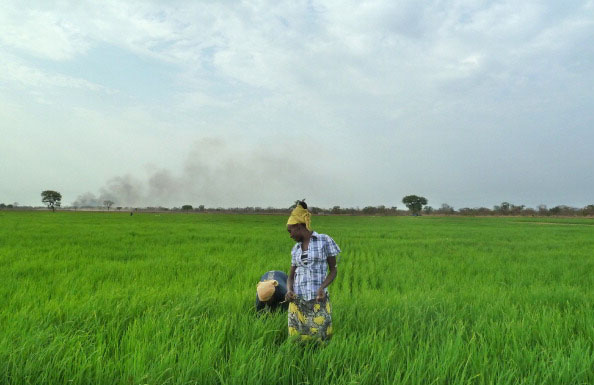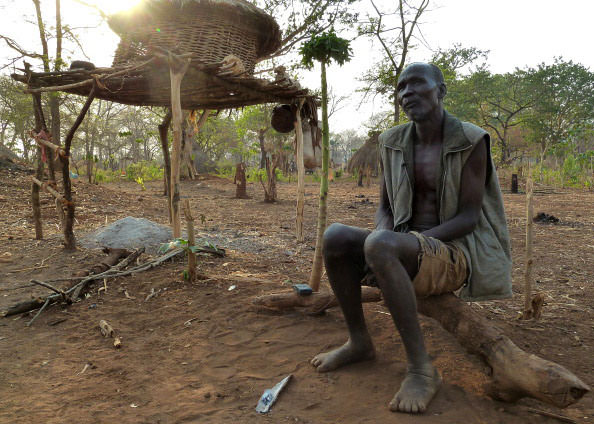In 2010, the Ethiopian government began moving thousands of people out of the rural villages where they had lived for centuries to other areas several hours’ walk away. The Ethiopian government calls this program the “Commune Center Development Plan and Livelihood Strategy” and claims it is designed to bring scattered rural populations closer to schools, health clinics, roads, and other public services. But the Commune Center program has been marked by a string of human rights abuses linked to government attempts to clear huge tracts of land for foreign investors. According to testimony collected by Human Rights Watch and other groups over the past two years, the relocations have involved beatings, imprisonment, torture, rape, and even murder. In many of the new “villages” the program has created, the promised services do not exist. Deprived of the farms, rivers, and forests that once provided their livelihoods, many people fear starvation, and thousands have fled to refugee camps in Kenya and South Sudan.
Such mistreatment by the government is nothing new in Ethiopia, an essentially one-party state of roughly 90 million people, in which virtually all human rights activity and independent media is banned. But what makes this case particularly outrageous is that the Ethiopian government may be using World Bank money—some of which comes from US taxpayers—to finance it. If so, this violates the Bank’s own rules concerning the protection of indigenous peoples and involuntary resettlement. In response to complaints from human rights groups, the Bank’s internal watchdog recently conducted its own review of the Commune Center program—commonly known as villagization in Ethiopia—which confirmed the human rights allegations and recommended that the Bank carry out a full investigation of its activities in Ethiopia.
However, it’s unclear whether the Bank’s executives are prepared to accept these findings. After all, this impoverished country—which has received some $15 billion in foreign aid over the past decade is now being held up as an international development success story, and it also happens to be an important US military ally.
The World Bank is the world’s largest development organization, with an annual budget of over $30 billion provided by Western governments and Wall Street investors. Ethiopia, which hosts a US drone base and has US backed fighters in Somalia, has been a particular target of the Bank’s largesse. Since 2006 the Bank has spent more than $1.5 billion alone on a program known as Protection of Basic Services to pay the salaries of schoolteachers, health workers, and other civil servants throughout rural Ethiopia. Bank managers involved with the Protection of Basic Services project deny that it has anything to do with villagization. They also maintain that villagization is voluntary and that there’s no evidence of coercion.
But refugees who recently fled Ethiopia say that many of the very same civil servants who are supported by the Bank are now being forced to round-up and move people under the government’s villagization program. Soldiers have also used beatings and threats to make people move. “Anybody and everybody on the payroll of the government have to do their part,”—even teachers—one informant told the human rights group Inclusive Development International last year. “And people who are opposing it, they will be detained. They will be jailed or taken to the military camp.”
One man who refused to relocate to the new “village” explained in a letter to the World Bank Country Director for Ethiopia in 2012 that the soldiers who beat him knocked out two of his upper front teeth. “My brother was beaten to death by the soldiers for refusing to go to the new village,” he wrote. “My second brother was detained and I don’t know where he was taken by the soldiers.” A woman reported that because the promised services weren’t available in the new village, she and her daughter returned to their old village to get food. “One of my relatives was also there retrieving the maize he was forced to leave behind when we moved. Suddenly soldiers came and accused us of feeding rebels and shot our relative dead. They beat me and my daughter and raped us both.”
The human rights groups’ investigations have focused on Ethiopia’s Anuak, Nuer, and other ethnic groups, who reside in the sultry, fertile region of Gambella, and now number several hundred thousand people. The Anuak in particular have long had a tense relationship with other ethnic groups favored by the government, and many Anuak have vivid memories of the December 2003 massacre in which Ethiopian military killed more than 400 Anuak men, women and children and destroyed hundreds of homes. Breaking up existing villages might be part of a government strategy to uproot clandestine Anuak rebel groups.
Advertisement
But the government may have another motive in pursuing the villagization strategy against them. Over the past four years, the government has leased or marketed some 3.5 million hectares of fertile land across Ethiopia—an area equivalent in size to that of the Netherlands—to investors from Saudi Arabia, India, and other countries to grow food for their own populations and for the global market. In all, the government plans to relocate some 1.5 million people across Ethiopia by 2015, and the regions affected are the same ones in which huge tracts of land have been designated for investment.
These disturbing revelations have caused an internal battle among the World Bank’s leadership, according to Bank documents. In internal reports on the Gambella controversy, the Bank’s managers dismiss the human rights groups’ findings, claiming, for example, that the villagization program isn’t “synchronized” with its own program, Protection of Basic Services, even though the official objectives of the programs are the same and the people carrying them out appear to be identical and are being paid by the same budget. The managers also maintain that while the villagization program has faced “implementation challenges” it’s not abusive. They cite the findings of a group of officials from the UN, the US Agency for International Development and other organizations who have visited the new villages twice in the past two years. They say they found no evidence of coercion. However, the human rights groups point out that these officials gathered their information through group interviews. Although no government officials were present at the meetings, I know from my own experience interviewing people in rural Ethiopia that government informants were almost certainly there, monitoring everything that was said and who said it.
The Bank’s staff have never visited the Anuak refugees in the camps outside of Ethiopia where people can generally speak more openly. But in September, Human Rights Watch arranged for five refugees to visit the managers in their offices in Nairobi. During the meeting, according to people who were present, a World Bank official asked one of the refugees, who had been a teacher before he fled Ethiopia, whether he would prefer that the Bank not pay his salary. “Would that solve the problems with the villagization program?” she asked. The man reminded the official that he was no longer a teacher, but a refugee, and that there were no teachers at all in some of the villages where the Anuak people were now being forced to live.
Last fall, the California-based human rights group Inclusive Development International submitted a complaint on behalf of a group of Ethiopian Anuak refugees to the Bank’s Inspection Panel, an internal watchdog group that determines whether Bank projects violate its own regulations. Following this complaint, the Inspection Panel members carried out a preliminary review to determine whether a full investigation was warranted. They interviewed refugees in Kenya and South Sudan as well as officials of the Ethiopian government and the World Bank itself. In February, the Inspection Panel issued its findings, confirming that there was sufficient evidence to be concerned about abuses in the villagization campaign and about the overlap between it and the Bank’s Protection of Basic Services program. Now the Executive Board of the World Bank must decide whether to follow these recommendations and conduct a full investigation, or continue to do nothing. The Board is scheduled to make a decision about the Inspection Panel’s report at a meeting on March 19.
During the past decade, the US and other Western donors have supported many fine projects in the developing world with inspiring goals like saving lives, educating children and ending poverty. Since Ethiopia’s Protection of Basic Services project began, for example, independent surveys have found improvements in some crucial measures of development such as child mortality (though it’s worth noting that the improvements have been most pronounced in Ethiopia’s three major cities, and in Tigray, the region that happens to be home to the ethnic group of the nation’s highly autocratic and repressive leadership).
But in twenty years working in this field, I have long since lost count of the number of projects I’ve visited that turned out not to be doing what their project documents claimed they were doing. The only way to find out whether development funds are being spent as they should be is to listen to the intended beneficiaries or—in repressive countries like Ethiopia where people are often afraid to speak out—the human rights advocates who represent them. That the World Bank managers have until now ignored these voices does not inspire confidence in their willingness to ensure that our tax dollars are being properly spent.
Advertisement
If anyone has the wisdom to figure out what to do about this mess, it is Jim Yong Kim, who succeeded Robert Zoellick as president of the World Bank in 2012. A medical doctor, former Harvard public health professor, and World Health Organization director, Kim is considered a kind of hero by some. Dying for Growth, a 2001 essay collection he edited, described in great detail how the World Bank’s past economic policies had harmed the health of the poor throughout the developing world. It should be obvious to him that the Bank’s support for politically repressive regimes may do the same. Kim and the other Bank executives finally have a chance to restore the organization’s reputation by showing that all human rights abuses are impermissible in its programs, even those committed by governments their most generous donors happen to favor.




